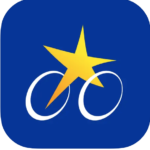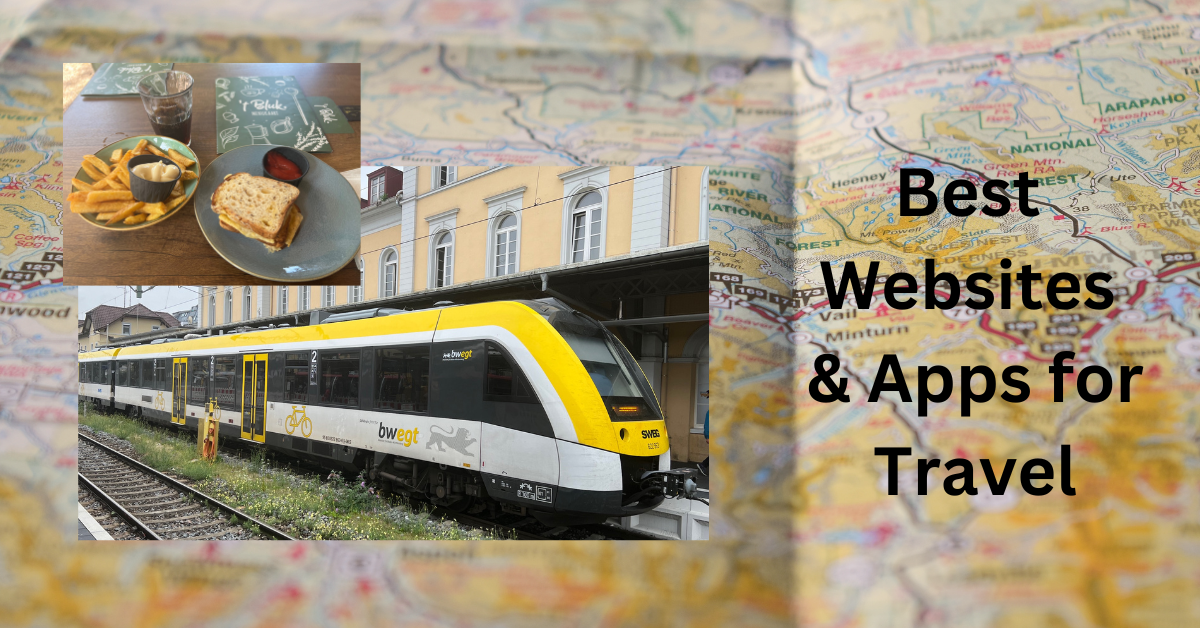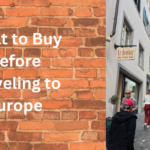As my wife and I discovered on a recent trip to Europe, finding and using the best travel websites and cellphone applications (apps) can make your trip go much more smoothly. While traditional travel books are still a good resource, travel websites and apps are absolutely essential. In this article, I will share with you what we found to be the best overall travel apps and websites, plus a few that are specific for European travel.
Kathy and I wondered aloud several times on our vacation how people managed to travel in the days before the Internet, GPS, and cellphones. We would have been lost (literally) without our suite of travel apps and websites. Thankfully, all of the apps we used are free, even though some offer premium versions with more features.
We traveled in the Netherlands (10 nights), Germany (7 nights), and Switzerland (2 nights). The websites and apps you will need may differ from our list depending on where you plan to travel. Even so, most of these websites will help you no matter where you plan to travel.
To get the most out of your trip, you have to spend time researching it. These days, part of that research is going to involve selecting valuable apps and websites that fit your itinerary and interests. Before the date arrives for your trip, you will want to download the apps and set up any necessary websites, creating accounts and providing payment information where necessary.
The Best Apps and Websites
Here are some of the websites and apps we found most helpful:
 TripIt: This app is easy to use and helps you build a detailed itinerary. It was one of the apps I used most often. With TripIt, when you book a flight, hotel, car rental, train reservation, or activity, it automatically adds it to your trip itinerary. You can also manually add your own itinerary items and notes. You can store confirmation numbers, tickets, and other useful data. The free version is good enough for most travelers, but a paid premium version is available with more bells and whistles. I opted for the premium version so I could download more images such as screenshots of tickets and maps and more easily share travel plans with my wife.
TripIt: This app is easy to use and helps you build a detailed itinerary. It was one of the apps I used most often. With TripIt, when you book a flight, hotel, car rental, train reservation, or activity, it automatically adds it to your trip itinerary. You can also manually add your own itinerary items and notes. You can store confirmation numbers, tickets, and other useful data. The free version is good enough for most travelers, but a paid premium version is available with more bells and whistles. I opted for the premium version so I could download more images such as screenshots of tickets and maps and more easily share travel plans with my wife.
TripAdvisor: You probably know about this website and app, but it is very helpful when scoping out the next city you plan to visit. You can find reviews on attractions, lodgings, and restaurants. I also booked a couple of local tours directly through TripAdvisor, which went smoothly. It’s sometimes easier dealing with an English-language site like TripAdvisor rather than booking activities on European websites that may not offer an English-language version.
 Google Translate: Speaking of language issues, Google Translate was a lifesaver! We used it primarily to read menus in restaurants, but sometimes it was helpful for reading signs and brochures. Our German hotel included daily breakfast and dinner. Each morning at breakfast, they would give us that evening’s dinner menu and ask us to make our selections. It was in German (of course), but with Google Translate we had no problem converting it to English and making our choices. In addition to Google Translate, it’s also a good idea to know how to translate websites to your own language, when that option is available. Working on Apple devices, I often use the Safari browser. For most European websites, it was no problem to use Safari’s translate option and read the website in English. Some websites will offer multiple language versions, but most do not.
Google Translate: Speaking of language issues, Google Translate was a lifesaver! We used it primarily to read menus in restaurants, but sometimes it was helpful for reading signs and brochures. Our German hotel included daily breakfast and dinner. Each morning at breakfast, they would give us that evening’s dinner menu and ask us to make our selections. It was in German (of course), but with Google Translate we had no problem converting it to English and making our choices. In addition to Google Translate, it’s also a good idea to know how to translate websites to your own language, when that option is available. Working on Apple devices, I often use the Safari browser. For most European websites, it was no problem to use Safari’s translate option and read the website in English. Some websites will offer multiple language versions, but most do not.
ricksteves.com: We highly recommend this website! Rick Steves is a well-known, U.S.-based expert on European travel. The “Travel Tips” section of ricksteves.com is a priceless treasure trove of helpful travel information. This section includes detailed information on how to travel on trains across Europe, which we found especially helpful. You can also find travel guides and useful information about airports and train stations.
Fodor’s and Lonely Planet are two of the more popular all-purpose travel websites. Each has pages dedicated to the cities and countries tourists most often frequent. Both also publish country-specific travel books. Whether you’re going to Paris or Athens or almost anywhere else, Fodor’s and Lonely Planet can help guide you.
Best Apps for Trains and Buses

Rail Europe: This is an excellent app and website for finding the best rail service anywhere in Europe and booking train reservations online. They book 2.5 million train trips each year, making Rail Europe one of the most popular sources for purchasing train tickets in Europe. I purchased some of our train tickets through RailEurope and the service was flawless.
Trainline: This is another app for checking train schedules and booking tickets. You don’t necessarily need Trainline and Rail Europe, since both provide similar services. Check them out and use the one that seems best to you. We opted for Rail Europe, but both are fine resources.
 Rome2Rio: This app mimics some of the features of TripAdvisor, such as being able to book hotels directly on the site. What sets Rome2Rio apart is its ability to identify and book your best means of transportation between two cities. It will show you options including buses, trains, airlines, ferries, and driving, with travel time and prices. If you wish to book a bus or train, it gives you all the details and allows you to purchase the ticket online.
Rome2Rio: This app mimics some of the features of TripAdvisor, such as being able to book hotels directly on the site. What sets Rome2Rio apart is its ability to identify and book your best means of transportation between two cities. It will show you options including buses, trains, airlines, ferries, and driving, with travel time and prices. If you wish to book a bus or train, it gives you all the details and allows you to purchase the ticket online.
NS and 9292: These free apps provide you with all the information you need for traveling within the Netherlands. NS is the national train service in the Netherlands. 9292 goes further, providing routing information for trains, metros, buses, and ferries in the Netherlands. On either app, you can get detailed routes and schedules and purchase tickets. These are must-have apps if you plan to travel within Holland. By the way, we found the train network in the Netherlands easy to use and reliable. It has a new system where you can simply scan on and off of the train using a credit card. You no longer have to stand in line to buy tickets or buy a chip card pass.
DB: Deutsche Bahn is the national train service of Germany. Their app is a great place to check schedules, purchase tickets, and track your progress as you travel. If you are going to Germany and plan to use the trains, be sure to download this free app.
If you plan to use trains and buses in other European countries, you can likely find apps equivalent to NS, 9292, and DB. If not, use a broader app that covers all of Europe such as Rail Europe, Trainline, or Rome2Rio.
Apple Maps and Google Maps: I was pleasantly surprised to discover how well Apple Maps and Google Maps performed in Europe. The same GPS mapping apps you use at home work in Europe too. Google Maps is best for finding bike routes, but I had better success with Apple Maps when I needed help finding a bus or with turn-by-turn directions. While my first preference when checking bus and train schedules was to use apps native to that country or region, I often found Apple Maps and Google Maps equally fast and reliable sources of information.
More Great Apps
 HogeNood: If you don’t do anything else you read in this article, be sure to download this cellphone app if you plan to travel to the Netherlands or Belgium! HogeNood helps you find nearby restrooms. Depending on where you are traveling in Europe, public restrooms are sometimes hard to find. Speaking of restrooms, be aware that many public restrooms in Europe require payment, typically between .50 and 1 euro. On the other hand, public bathrooms in Europe tend to be cleaner than in the U.S. We found that restaurants and convenience stores that charged for using their restrooms would nearly always credit the money back to you if you made a purchase. Tip: Always carry local currency coins and small bills with you.
HogeNood: If you don’t do anything else you read in this article, be sure to download this cellphone app if you plan to travel to the Netherlands or Belgium! HogeNood helps you find nearby restrooms. Depending on where you are traveling in Europe, public restrooms are sometimes hard to find. Speaking of restrooms, be aware that many public restrooms in Europe require payment, typically between .50 and 1 euro. On the other hand, public bathrooms in Europe tend to be cleaner than in the U.S. We found that restaurants and convenience stores that charged for using their restrooms would nearly always credit the money back to you if you made a purchase. Tip: Always carry local currency coins and small bills with you.
Airport apps: Many major European airports offer a cellphone app. We downloaded the apps for the two largest international airports we used, Amsterdam and Zurich. We could not only can track flight information but these apps provided maps and a list of stores and services available within the airport.
 Food and special diets: Both of us are gluten-sensitive, so we need gluten-free foods when we eat out. One phone app we use in America is Find Me Gluten Free. To our surprise, it worked just as well in Europe. Most of the cities we visited had at least a few listings, including reader reviews. We picked several restaurants using this list. By the way, if you are gluten intolerant or celiac and want to visit Europe, make it a point to include the Netherlands. Gluten-free foods were easy to find in restaurants, hotels, and supermarkets. Our hotel in Haarlem made us a hot loaf of delicious gluten-free bread each morning. That’s never happened to us in America!
Food and special diets: Both of us are gluten-sensitive, so we need gluten-free foods when we eat out. One phone app we use in America is Find Me Gluten Free. To our surprise, it worked just as well in Europe. Most of the cities we visited had at least a few listings, including reader reviews. We picked several restaurants using this list. By the way, if you are gluten intolerant or celiac and want to visit Europe, make it a point to include the Netherlands. Gluten-free foods were easy to find in restaurants, hotels, and supermarkets. Our hotel in Haarlem made us a hot loaf of delicious gluten-free bread each morning. That’s never happened to us in America!
Museums and other attractions: lf visiting Europe’s world-class museums is a priority for you, you may want to download apps to some of the larger museums. You can learn more about what to expect and get layouts and maps. We downloaded the excellent app (in English) to the Rijksmuseum in Amsterdam. This is a sprawling complex, so the app can make your visit more efficient. Many other major attractions also have cellphone apps. We visited Madurodam, a theme park in The Hague (in the Netherlands) famous for its scale model renderings of famous Dutch landmarks throughout Holland. It has a cellphone app for those who want to learn more before arriving.
 EuroVelo Cycling App: I’m a bicyclist and wanted to cycle in Europe, so I found the EuroVelo app helpful. This is the app for Europe’s best network of 16 long-distance cycling routes. The app includes a route planner and detailed descriptions. No matter what your interest as a European traveler, there is likely an app for it.
EuroVelo Cycling App: I’m a bicyclist and wanted to cycle in Europe, so I found the EuroVelo app helpful. This is the app for Europe’s best network of 16 long-distance cycling routes. The app includes a route planner and detailed descriptions. No matter what your interest as a European traveler, there is likely an app for it.
Download and Go
Traveling in Europe is a rewarding experience, a trip of a lifetime for many of us. These cellphone apps and websites will reduce the stress that accompanies travel and make your big trip even more enjoyable.
Read these related stories:
Best Travel Items to Buy Before Traveling to Europe
Tips for Senior Adults (and others) Before Taking an International Trip








